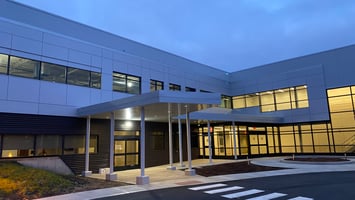Thinking about renovating or expanding your healthcare facility? An Infection Control Risk...
The Vital Role of CA in Ambulatory Healthcare Construction
In the complex process of ambulatory healthcare facility design and construction, construction administration (CA) is an important ingredient in ensuring project success. In the CA phase, the architect and engineers play an important and multifaceted role in protecting the client's vision, facilitating project execution, and bridging the gap between design and reality. The following post delves into the significance of construction administration and the role of the design team in this specialized context.
Protecting the Client's Vision and Investment:
Quality Control: Construction administration acts to guard the client's vision. Through careful observation and communication, the design team evaluates whether the construction aligns properly with the design intent depicted in the construction drawings and specifications. This includes scrutinizing the assembly of materials and systems, reviewing workmanship and adherence to plans, and identifying deviations that could compromise the final product.
Cost Management: A very important benefit of CA is proactive cost management. By addressing issues during construction, architects attempt to avert costly rework and change orders, ultimately saving the client money. This financial prudence can enhance the overall efficiency of the project, contributing to its success.
Risk Mitigation: The architect, acting as the client's representative, plays a crucial role in risk mitigation. Evaluating change orders, resolving disputes, and documenting progress, they aid in shielding the client from potential legal or financial issues, ensuring a smooth and secure construction process.
Ensuring Smooth Project Execution:
Communication and Coordination: Effective communication is the cornerstone of successful construction projects. Construction administration facilitates seamless communication between the architect, contractor, and other stakeholders, preventing delays and misunderstandings. Helping to keep everyone informed and on the same page is crucial to project success.
Problem-Solving: Unforeseen issues are inevitable in construction. The architect's involvement and on-site presence during CA allows for prompt and collaborative problem-solving, minimizing disruptions and keeping the project on track. This adaptive approach ensures that challenges are met with solutions, not setbacks.
Change Management: Change is a constant in construction. CA ensures that changes are documented, approved, and seamlessly integrated into the project, maintaining its overall integrity. This process is essential for responding to evolving project requirements.
Bridging the Gap Between Design and Reality:
Field Verification: Real-world conditions may necessitate adjustments to design details. CA provides architects with the opportunity to observe and refine these details during construction, ensuring that the final product aligns closely with the original vision.
Material and System Integration: CA provides architects and engineers the ability to address the unanticipated interplay between materials and systems. This proactive approach improves compatibility and proper functioning of various components, helping to prevent issues that may arise post-construction.
Documentation and As-Built Drawings: During construction, architects and contractors document construction progress and update design documents accordingly. At the end of construction, the design team will review the contractor's "as-built" drawings, which become a valuable reference for the client for future maintenance and renovations.
Unique Aspects of Ambulatory Healthcare Construction:
Technical requirements: Healthcare facilities have complex systems and technology (e.g. medical equipment, ventilation, emergency power, etc.). The design team's role in CA helps ensure these are installed and functioning correctly, ensuring patient safety and care quality.
Regulatory compliance: Healthcare facilities must adhere to stringent building codes and healthcare-specific regulations. Observation of construction progress helps assure compliance to avoid safety hazards and delays related to failed inspections.
Infection control: Construction activities can pose infection risks, especially in existing facilities. The onsite presence of the architect and engineers during construction offers additional experienced observers to assist in the detection of potential gaps in infection control procedures.
Overall, construction administration acts as a safety net for the client, ensuring their vision is translated into reality with quality, efficiency, and minimal risk. It is an essential function of the architect's service bridging the gap between the design phase and the finished building, safeguarding the client's investment and maximizing project success. Engaging the design team in CA is especially important in ambulatory healthcare construction because of the added complexity of these building types. Don't hesitate to contact us if you have questions about the CA process and the added value it will bring to your project.




